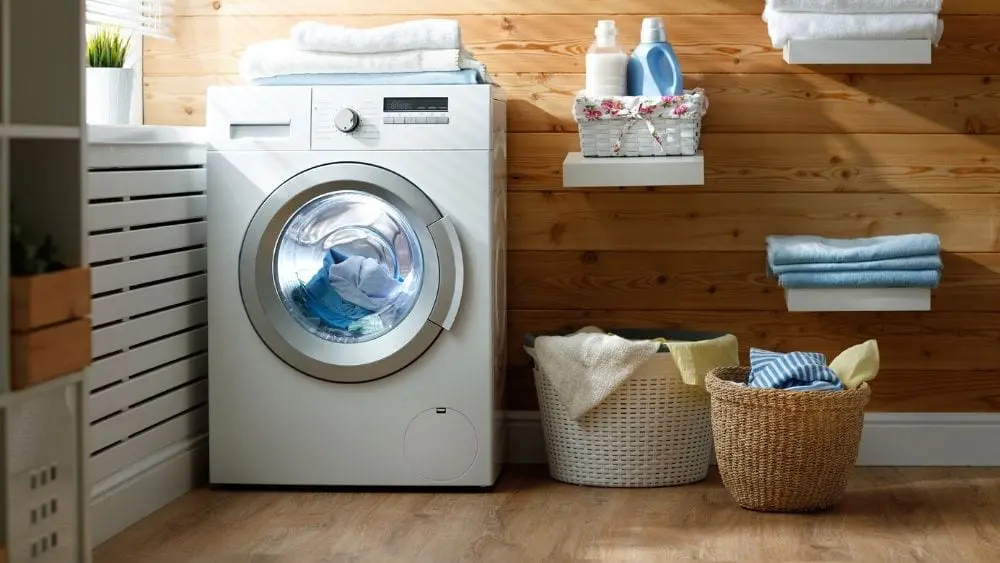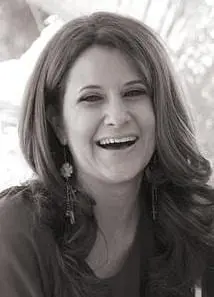
Ahh, laundry. Everybody needs it. Nobody wants to do it. Not so if you have a laundry room you’ll actually want to be in for a while. From design choices to organizational redos, there are myriad ways you can rethink how you use and feel about your laundry room. Here are seven tips to keep in mind.
Location, Location, Location
If you’re building a new home, the first thing to consider about a laundry room is where to place it. Many homeowners prefer having it close to the bedrooms since that is where the clothes tend to pile up. But if your home has multiple stories and the bedrooms are upstairs, that can be tricky unless it’s planned for from the get-go. The main thing is to place it where it’s convenient but not so close to living areas that the noise becomes a nuisance. Wherever possible, placing it near electrical and plumbing points and a good venting location will save money.
Side by Side or Stackable?
There’s no question that stackable washers and dryers save space, so if you live in a condo or townhouse that may be ideal. Pricewise, they cost less than front loaders but about the same as top loaders. But if anyone in the home is vertically challenged, this option can become a real problem.
Side-by-side units are easy to reach whether they’re top or front loaders and provide an instant surface for folding clothes, so you don’t have to carry your laundry pile to a nearby table or build out a counter in your laundry room. Side-by-side units also provide a wider selection of upgrades to choose from, including high-efficiency, large capacity, and extra rinse cycles. You can even find machines with smart sensors that will automatically adjust the water level and temperature.
Wanted: Folding, Hanging, and Ironing Stations
If you want to make life easier for yourself when it’s time to do laundry, making sure you have a comfortable folding station is a must. It’s easy to have a simple counter built above side-by-side front-loaders, but if you have top loaders or stackables, it will have to be a separate unit. For items that should be hung instead of folded to prevent wrinkles, it’s important to have an open hanging rack or one tucked inside a cabinet that you can easily access. Even a bath towel holder mounted on the underside of a laundry-room shelf makes a good spot for hanging. A bin or deep drawer where you can store hangers is ideal. If you have enough space, the laundry room is also the perfect spot for an ironing station. Save space with one that folds down from the wall or tuck the freestanding kind inside your tallest cabinet or closet. In a pinch, a folding surface can also double as an ironing table.
Storage is Always the Solution
For a laundry room to be comfortable to work in, you’re going to need plenty of storage. A mix of cabinets, shelves, and perhaps even drawers is ideal. Keep the items you use every day, like detergent and dryer sheets, on a shelf near the washer and dryer. “To upgrade the look of your laundry room, place dry detergent in clear glass containers,” says Julia Hu of Hu Loves Decor. Pretty baskets are perfect for corralling laundry essentials such as dryer sheets and stain removers. “It’s more aesthetically pleasing than cardboard boxes and bulky bottles,” she adds. A bin for random items that tend to collect in most laundry rooms, like lost socks, is probably a good idea, too. This way everybody knows where to check first when something is missing.
Trust Us, You’ll Use a Utility Sink
If you’re a laundry guru you know that certain stains need to be rinsed out before they go in the washer, not to mention there’s always the delicates that are best washed by hand. For these reasons, the best and most comfortable laundry rooms have utility sinks. Brands like Rejuvenation have taken what has long been an eyesore and turned it into vintage-inspired works of art. For a real taste of vintage, salvage yards are often brimming with sinks from a variety of different eras, many of which would work perfectly in the laundry room and give the space a unique look.
Make the Floor and Walls Pop
With all the functions they serve, it’s no wonder that laundry rooms usually lack style. The floor and walls are two great ways to bring in a pop of personality. Try choosing bold paint colors or go for stripes using painter’s tape to guide you. If you do a lot of handwashing, consider putting tile on the wall behind the sink. This is a great room to try out fun or kitschy wallpaper, too, like this vintage laundry print from Spoonflower. “It’s a smaller room that hopefully you’re not spending most of your time in, so there’s less chance you’ll get tired of it,” Hu says. “I see a lot of botanical and citrus prints for laundry rooms that are really fun.” The floors, too, are another blank canvas. Go for a funky pattern, like bricks set up in a herringbone pattern or a chic black and white look. Whatever you do, don’t be afraid to push the envelope with your design choices when it comes to the walls and floor.
Add Finishing Touches
Never underestimate the power of one small tweak to make a huge difference in how a space looks and feels, especially one that lacks as much excitement as a laundry room. A beautifully designed light fixture, a couple of colorful hanging planters, like these from West Elm, or perhaps a high-quality Bluetooth speaker so you can listen to tunes while you tackle the weekly laundry pile can suddenly make you want to spend a whole more time doing laundry.

Ana Connery is former content director of Parenting, Babytalk, Pregnancy Planner and Conceive magazines as well as parenting.com.
While editor in chief of Florida Travel & Life magazine from 2006-2009, she covered the state’s real estate and home design market as well as travel destinations.
She’s held senior editorial positions at some of the country’s most celebrated magazines, including Latina, Fitness and Cooking Light, where she oversaw the brand’s “FitHouse” show home.
Ana’s expertise is frequently sought after for appearances on “The Today Show,” “Good Morning America” and CNN. She has interviewed the country’s top experts in a variety of fields, including U.S. Secretary of Education Arne Duncan and First Lady Michelle Obama.
 The Roof Over Your New Home
The Roof Over Your New Home